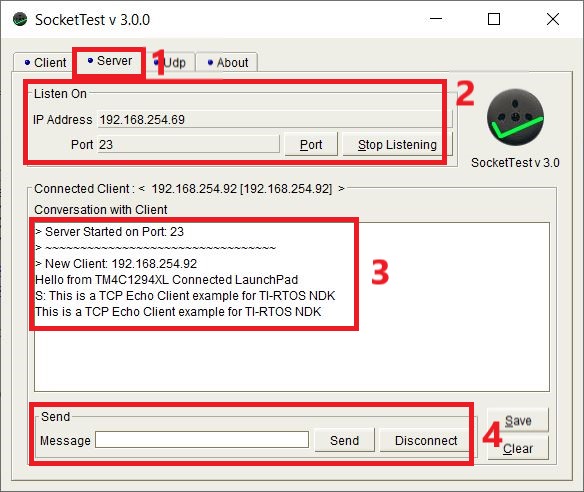SPMA080 April 2021 TM4C1292NCPDT , TM4C1292NCPDT , TM4C1292NCZAD , TM4C1292NCZAD , TM4C1294KCPDT , TM4C1294KCPDT , TM4C1294NCPDT , TM4C1294NCPDT , TM4C1294NCZAD , TM4C1294NCZAD , TM4C1299KCZAD , TM4C1299KCZAD , TM4C1299NCZAD , TM4C1299NCZAD , TM4C129DNCPDT , TM4C129DNCPDT , TM4C129DNCZAD , TM4C129DNCZAD , TM4C129EKCPDT , TM4C129EKCPDT , TM4C129ENCPDT , TM4C129ENCPDT , TM4C129ENCZAD , TM4C129ENCZAD , TM4C129LNCZAD , TM4C129LNCZAD , TM4C129XKCZAD , TM4C129XKCZAD , TM4C129XNCZAD , TM4C129XNCZAD
- Trademarks
- 1 Introduction
- 2 Application Examples
- 3 Application Setup
- 4 Download and Import the Ethernet Examples
- 5 How to Create an Ethernet Application for TI-RTOS NDK
- 6 Enet_tcpecho_server_tirtos Example Overview
- 7 Enet_udpecho_server_tirtos Example Overview
- 8 Enet_httpServer_tirtos Example Overview
- 9 Enet_dns_tirtos Example Overview
- 10Enet_sntp_tirtos Example Overview
- 11Enet_tcpecho_client_tirtos Example Overview
- 12Enet_udpecho_client_tirtos Example Overview
- 13Enet_httpget_tirtos Example Overview
- 14References
11.2 Configure the SocketTest Server
Since this is a client application, the server must be setup first and be in a listening state before the client can connect to it.
Follow the steps shown in Figure 11-1 to setup the SocketTest server:
- Open the Server tab in SocketTest.
- Enter the server IP address as well as the port number. The IP address is the one of the PC which SocketTest is running on. The IP and port number need to match the settings defined in tcpEchoClient.c as shown in Section 11.1. Finally, press the “Start Listening” button. Wait for the greeting message to appear on the conversation window once the client connects.
 Figure 11-1 SocketTest Server Configuration
for Enet_tcpecho_client_tirtos
Figure 11-1 SocketTest Server Configuration
for Enet_tcpecho_client_tirtos